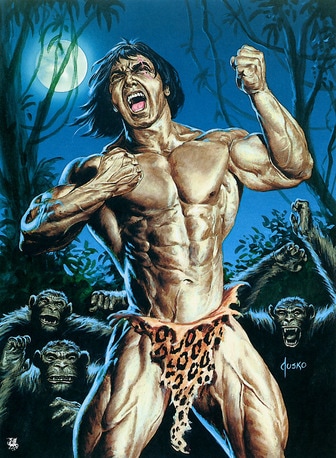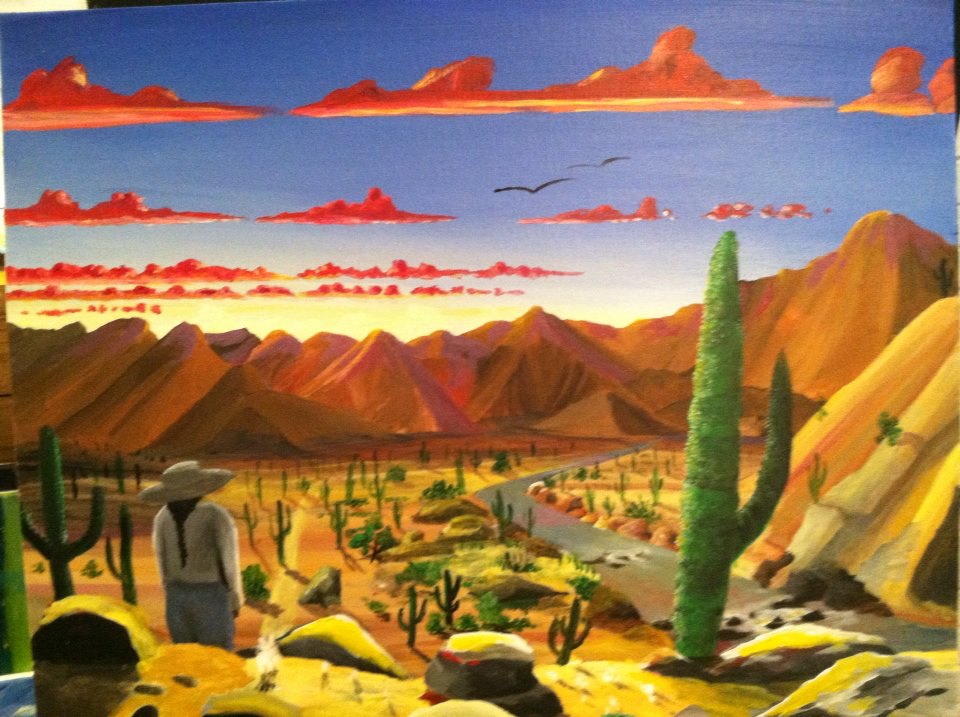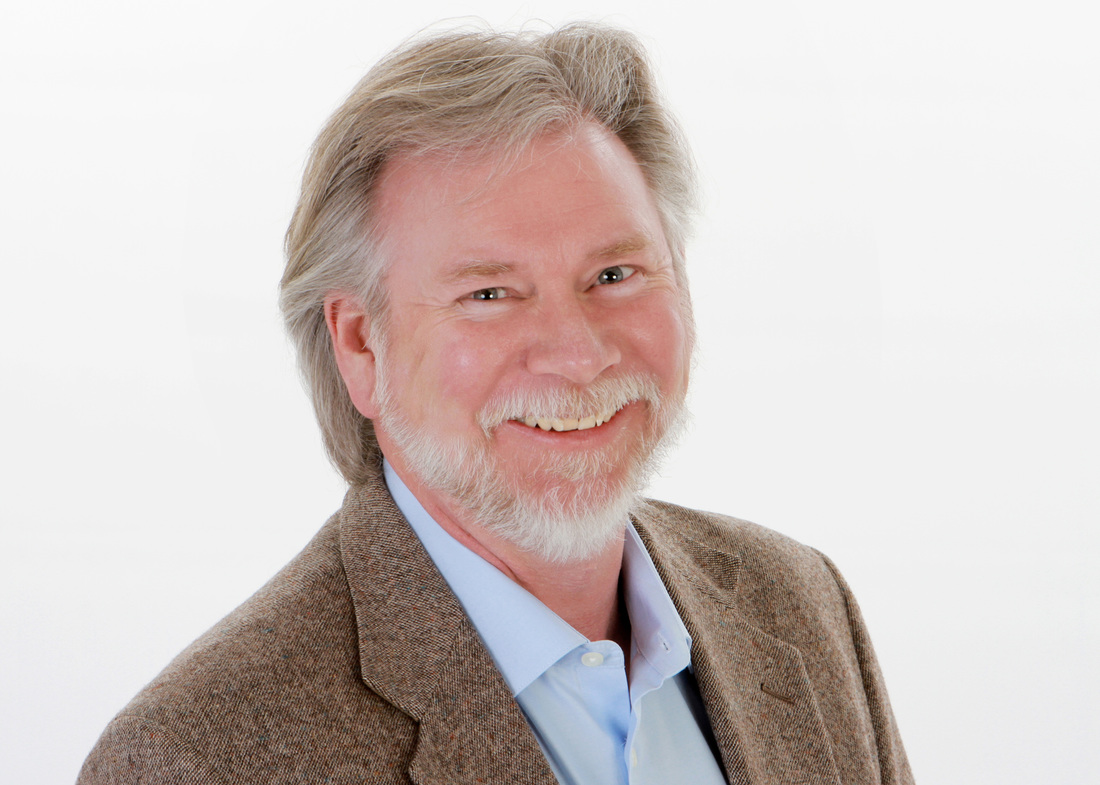 Who defines masculinity in a society? Do men define it or are women contributors as well? Or is it just the most powerful influencers in the culture that set this norm? Do we have specific baseline behaviors that perhaps all societies around the world define what masculinity looks like? Or is it historically defined as an arbitrary set of rules, based on the present day cultural norms? How does Western society base its definition of manliness? Current traditional definitions of masculinity in the U.S. tend to base masculinity on several factors. Many of them centered on physicality (read: physical strength) and acquisition of resources. So for example, a man’s prowess at providing for his family or for himself might set a picture of his masculinity. Still important may be his sexual aggressiveness in finding and selecting a mate. We still see in our cultural dialogue, the depiction of the quintessential male as an emotional isolate, who always remains in the logical, rational mindset, to maintain good decision making in the face of an uncertain world. Of course, there’s dominance in relationships and understood leadership roles in work and social activities. Finally, if you throw in a thought for ambition, pride, honor, and duty, you could pretty much sum up what we in the West would consider our ideal man. How does this compare with other cultures around the world? With current American influence at its greatest, you might think that our masculine definitions would be more accepted around the world. In many ways, masculinity around the world can be seen as an opposite of feminine traits and in fact, that measure was used to create a scale as it were of how masculine values rate around the world. This scale known as the Hofstede Scale ranks countries around the world based on a masculinity ranking; the higher the number the more emphasis in the culture on masculine values versus feminine. Japan ranked as the highest on the masculine scale with a score 95 out of 100. The U.S., surprisingly ranked around the middle of the countries listed, which was a good cross section of nations around the planet. Joining the U.S. in the middle were countries from the Middle East (Egypt, Kuwait, Saudi Arabia, et.al), countries from Africa and surprise – Latin America. At the low end were the egalitarian Scandinavian countries (once home to the warrior Vikings). I suppose Ikea might be credited with that. By using a scale that measures masculine values (aggressiveness vs. passivity, emotional detachment vs. emotional engagement, power vs. cooperation, traditional values vs. open values, etc.) and comparing it to what is considered feminine values, the scale is measuring what essentially is the opposite of feminine. It would stand to reason that that is how we define masculinity against the baseline of what culturally we see as feminine behaviors. As the ratings drop on the Hofstede scale, there is more of a lean towards more androgyny within both sexes and a more egalitarian approach to defining gender roles. Again, in the West, we often see portrayed in novels, film, and advertising, the depiction of the traditional male character as strong and silent, or as a tough guy, or even a great and forceful lover and physically dominant enough to qualify for Alpha Male pay. There is a certain tendency towards homophobia (more on that in a minute) and possessing domain over women. Our Western ideal male also tends to be a winner and often a winner at all costs--personal and interpersonal. The expectations are hammered in our heads as males from childhood to the grave. We never escape this ideal, yet we all know that it is entirely unrealistic to expect all men to live up to this caricature. In fact, living up to most of it is a fast lane to interpersonal issues, mental health problems, substance abuse, and violence. Across history, especially Western history the ideal male role has been depicted as hero, chivalric and even as court dandy, all changing under the cultural shifts over time. With the rise of technology and the increase in leisure time, male roles have changed accordingly. Less work on providing for self and family, more on recreating a new vision for the male, which includes new models, i.e., metrosexuals (see 18th century court dandies), herbivore males an extreme bellwether, which seems to forsake male sexuality altogether and stay at home dads, who take on a lot of the traditional female work from home. Many of our traditional values about masculinity have been intertwined with our religious beliefs as well. In Western culture, the influence of Christianity in a largely patriarchal church that emphasizes the importance of male dominance, including the Godhead can’t be understated. I believe today that many of those who cling to evangelical and fundamentalist views of Christianity are the most threatened by what could best be called the “precariousness of manhood” which is now threatening traditional male role values. With the rise of the feminist movement in the 60s, followed closely by the emergence of a strong and vocal LGBTQ movement in the 70s, traditional males are feeling affronted from many sides. The fact that this country elected a demagogue like Donald Trump as our leader represents the last gasp of this traditional masculine based culture. Surprisingly, many women still support the traditional male value based ethos even if it is not necessarily in their best interest to do so. Fear of change is a powerful motivator. And now, we are beginning to see the emergence of the sensitive male movement, although movement may be a bit premature at this stage. Highly sensitive men are starting to recognize that they are different and for good reason and beginning to find themselves in the complex world of masculinity. The world needs us now, and as psychologist Ted Zeff contends, we can be instrumental in saving this planet from runaway traditional aggressive masculinity. HSMs are now able to, with head up, state that they are a different kind of male. We are no longer accepting labels of gay or effeminate or sissy, but showing strength with a sensitive, nurturing empathetic, cautious, non-aggressive and contemplative nature. All characteristics that even twenty years ago, would have branded them as weak and ineffectual men. And like the feminist movement and the LGBTQ movement, this idea of a different definition for masculinity is another nail in the coffin for traditional manliness. And you can bet there is going to be strong push-back. Now, I don’t expect that traditional value masculinity is going to disappear, maybe ever; however, I think it’s going to have to move over for a wider and deeper definition of what masculinity entails. The world is changing, and as I often mention, evolution favors those that can adapt and change with the environment. The traditional male value systems are going to have to change as well. And as HSMs we can and should be the perfect intermediaries and ambassadors for that change. For many of us, we have lived in both worlds. And as HSPs, we know how to be the bridge. What about the next generation of men, the boys of today? What can we do to shape them, give them guidance on being a man, in a world where the definition of masculinity must and is changing? We should focus on teaching them to be themselves first and to craft a new ideal for masculinity. There is no need to sacrifice strength, but realizing that strength is not just physical strength, but emotional strength as well. Let’s not forget men still have a sexual role to play, but interpersonal relationships don’t have to be based on aggressiveness or dominance. We can be leaders without sacrificing compassion; we can be active without forsaking contemplation. And yes, we can still be rough and tumble, get dirty, climb trees, be adventurous and at times androgynous, without losing our sight of the new masculinity. There is much to learn here for boys and men, and for that matter women who influence us so much. Here are some ideas on raising our boys, both HSP and non-HSP boys:
Footnote: A rather attractive grandmother came by the house recently to pick up a chair she had purchased from us. Her husband, a tall, quiet man was with her as was her three year old grandson. I remarked about how sharp the little boy’s cowboy boots looked. The grandmother proudly reached out for her grandson to gather his attention and she said to the boy, “that’s why we won’t to be a cowboy, isn’t?” the little boy shuffled around with his head down. The grandmother repeats to him, “and we want to be a cowboy because cowboys don’t cry, right?” the little boy thought a moment then silently shook his head in acquiescence. Grandmother was a traditionalist and just did more harm than good for this child. It was not her intent to harm, but the firmness with which she stated emphasized the ideal that men don’t cry. Shame. But, it’s the Texas way. I didn’t bother to ask her if she saw Brokeback Mountain. Seems that cowboys do cry. Thanks for stopping by, until next week… References: https://en.wikipedia.org/wiki/Masculinity https://www.andrews.edu/~tidwell/bsad560/HofstedeMasculinity.html http://www.clearlycultural.com/geert-hofstede-cultural-dimensions/masculinity/ http://www.apa.org/monitor/2012/06/masculinity.aspx http://www.artofmanliness.com/2008/06/08/7-vital-characteristics-of-a-man/ https://www.psychologytoday.com/blog/life-in-the-intersection/201703/what-is-healthy-masculinity https://www.psychologytoday.com/blog/the-race-good-health/201610/why-do-we-tell-boys-man http://drtedzeff.com/news/sensitive-men-can-save-the-planet.php https://www.psychologytoday.com/blog/our-gender-ourselves/201205/boys-men-raising-independent-open-minded-sons
1 Comment
What does it mean to walk the path of fear? As Carlos Castaneda once said, and I paraphrase, that walking a path of fear is walking as if death is stalking us, always worried that one wrong move and death will overtake us. It’s a subconscious thing. Fear is our warning system, planted deep within in our minds, throttled by our amygdala, and embellished by our conscious minds. Fear is about warning about an impending, imagined death. Surviving is avoiding death. But, how does this affect our ability to live genuine, authentic lives? Is living a life well wasted, ravaged by fearfulness, really a life? Our mission in life is simple: learn, grow and for the spiritually minded, love. Everything else is gravy. It doesn’t matter how each of us filters the world, filters wide open or mostly shut, we all have to bend to the mission. Fear is a driver. Fear is a healthy impulse. Fear can be learned and it can be imagined. Our reactions to fear are often comprised of four actions: freeze, to ponder the circumstance; Fight – to resist the threat; flight to escape the threat; or fright – to internalize the threat, in which case it can become overwhelming. For many HSPs, the last action is simply too often the case. And we are driven back to the comfort zone, that place where the threat is controllable or no longer there. But what are we really afraid of? To die, to be hurt, to be misunderstood, to be shamed or made fun of? To be afraid to learn something new or grow? Perhaps, we fear the growth we may experience will be the death of who we are, a kind of existential death. Death of self and the dismantling of our ego, our essence. Or is this just an overwhelm thing? Do we fear the onslaught of too much threatening information, too much to process with a rush of adrenaline? Is overwhelm like drowning in a tidal wave, out of control and rushing into the unknown? HSPs often find themselves walking in this pathway of fear so that it seems fear is a driver of our behavior. Is fear avoidance a personality characteristic of HSPs? This is not to say that HSPs can’t brave or courageous or don’t do things that require overcoming fear. But we live so much in our heads that before the threat is even real we have imagined endless possibilities, some not so positive. Its no wonder that many HSPs are threatened when their comfort zone is questioned. But the comfort zone is not an expansive mechanism, restorative, yes, but not the ideal mechanism for growth. For humans habituation to fear is hardwired. This ability to habituate to the thing we fear is what allows us to try novel and new experiences. It increases or capacity for survival. This is not just for the HSP world to ponder, but for all humans. Avoiding the thing(s) we fear, prevents this habituation, this getting used to the fear and the repeated retreat into the comfort zone, does not relieve the fear. It avoids it, allowing the fear to anchor within. The only way out, is through the fear, says psychologist, Noam Shpancer. This requires expanding the comfort zone enough to repeatedly face the fear and overcome it. Experience brings confidence. Confidence is expansive and grows your comfort zone. So, where is this root of fear? Is it in the amygdala, the brains warning system? A limbic to cerebellum circuit that takes the subconscious warning signal and embellishes is with conscious emotions, creating fear and sometimes anxiety. With HSPs because of our sensory sensitivity is much greater than the population at large, we seem more prone to excessive fears and overwhelm because of our circuitry. According to Dr. Elaine Aron, we need to pay attention to where we feel the fear, generally in our bodies. We will register sooner than most. In that moment of freeze, mentioned above, it is our opportunity to consider the odds of our perceived threat happening and then act accordingly. We often confuse the arousal of the stimulation with the fear or emotion of the situation. But when it is time to act, we need to consider a thoughtful strategy and go with it. Consider the attributes of courage. No one that is courageous is fearless. Realize your vulnerability, acknowledge the fear and allow yourself to be exposed to the fear, the exposure will give you experience, valuable experience. Stay positive, sometimes, just saying the right things at the right time can help to associate positive actions with negative stimulus, helping you overcome the fearful thoughts. Practice bravely going beyond your comfort zone and you will grow as a result. So often we HSPs think that our comfort zone is the place where we can handle the fear. Our fortress, our mailed armor, our protection. Yet, staying solidly in the comfort zone for a lifetime without altering it, will keep us walking the the path of fear. I think we need to consider going beyond, risking the imagined type of “death” we fear so much and expand and rebirth that comfort zone. So, here’s my tips for overcoming that fear of which I speak:
Thanks for stopping by, until next week… References: https://opinionator.blogs.nytimes.com/2012/01/22/anatomy-of-fear/?_r=0 https://www.psychologytoday.com/blog/the-athletes-way/201405/neuroscientists-discover-the-roots-fear-evoked-freezing https://www.psychologytoday.com/blog/smashing-the-brainblocks/201511/7-things-you-need-know-about-fear https://en.wikipedia.org/wiki/Death_anxiety_(psychology) https://www.psychologytoday.com/blog/i-got-mind-tell-you/201508/the-amygdala-is-not-the-brains-fear-center http://www.hsperson.com/pages/1Nov04.htm Birds and meerkats are about the most alert, vigilant creatures I have ever seen. Their attention is attuned to their real world, a world where they can easily be prey with a careless moment of inattention. Their lives depend on staying vigilant. People in the modern world seldom need that type of vigilance to survive, yet we live like we do. Looming in our minds are the thoughts of crime, violence, terrorism, and aggression. Although it’s possible to be a victim, the general probability is low. Yet we all live in a state of heightened awareness of our environment, in an almost perpetual state of fear. Watch the news at night for a daily downloading of fear based information and it’s no wonder that we live our lives in a fearful state.
The average person feels that real fear. They may not carry it around in conscious awareness, but it lingers in the subconscious, activating the preamble to stress – the call to flight or fight. Yet, non-HSMs don’t generally find the need to retreat often to an imaginary comfort zone in order to cope with this underlying stress. They often deal with fear by becoming more aggressive, focusing outward: buy guns for protection, vote Republican, join the military, and think of protection in a moderately to heavily aggressive way often externalizing their individualism, pointing outward to deal with the stress or threat. HSMs, on the other hand, especially the ones that I know, don’t place as much attention to the fear of attack by a dark other, but rather fear the destruction of the planet, the demise of species, the spiritual decline of the population, and perhaps, jokingly, the aggressiveness of non-HSPs. They fear things of an existential and abstract nature, things that are deeper and more pluralistic. Instead of living in a pride of lion hunters, alert to threats and ready to attack, HSPs are more like meerkats. It seems that we are always, vigilant, alert, aware, highly charged and sensitive to the environment, looking just beyond the tall grass to see if there is something coming, ready at a moment’s notice to herd the gang back down the hole into the comfort zone of underground. We internalize the perceived threat and thinking of self and others. Balancing that world of vigilance, watching the world for outside threats is always a compromise between risk avoidance and risk taking. Determining which is the greater risk: starving (dynamic change) or being annihilated (static sameness), much like the meerkats, we have to determine to either move forward or be safe. We all know that lions are aggressive hunters. They have often been characterized as kings or queens of the jungle. They are at the top of the food chain and they rightly fear nothing. They are comfortable and in the flow. They eat what they please. The meerkats, on the other hand, are far less aggressive, and instead are vigilant and watchful. They display sentinel behavior and alert the group to imminent danger. There is always someone on point to watch the surroundings. We, my HSP friends are like that, in a metaphorical sense. Certainly, we are not meerkats, but our nature is to be cautious and watchful and alert. We do not attack first and ask questions later, we usually find a way back to our comfort zones, our cocoons, our burrows, when something threatens our comfort level. Now with that said, is one of the two species better adapted to survive? And speaking of comfort zones, does it even seem that lions can be bothered with having a comfort zone? Would it be fair to say that in comparison, that only the meerkats are concerned about safety first – a kind of comfort zone mentality? And, if so, does that make them less adaptable? When adaptation helps form an ecological niche, a way to live and cope with an environment, is living in a comfort zone a true adaptation? From a survival standpoint that would make sense, replacing brute strength with vigilance and self created protection zones. But does that favor long term evolution? Maybe. It should be noted that the one of the few survivors of the last mass extinction of dinosaurs was a furry little rodent like creature-- the first mammal. Smaller footprint, smarter, more cautious, better design, better adaptation characteristics. So why do comfort zones have anything to do with meerkats and lions? Last blog we talked about expanding the comfort zone. What then would it mean to leave the comfort zone for longer durations? Can HSPs even manage to do this consistently? Some of you might say that it’s a maladaptive strategy, akin to walking amongst the dinosaurs for a small defenseless and cautious mammal. Why risk it, when we are safe in the comfort zone? My point has always been that as individuals, not just HSPs, but as individuals, we have to expand our comfort zones to grow. As HSPs, we often strategize not to push those boundaries, because we become overwhelmed so easily. But, by expanding our comfort zones we hand over that additional information and processing to our unconscious mind, which learns the necessary adaptation for our particular nervous system. Overwhelm occurs when the conscious processing lacks the experience to cope with the overload or new information. But the unconscious will adapt if we let it. Because of the lack of experience with stressful new environments, we can literally through experiencing, however stressful, expand our comfort zones to grow our experience. Repeated experiences will encode new learning, new pathways of experience, and a new expanded comfort zone. In an aggressive and distracting world, HSPs need sanctuary for recuperating our psyche. This, I believe, is different than our comfort zones. Comfort zones are defined by fear boundaries, ego bound perimeters where safety, sameness and familiarity reign. This is our perimeter fence staked around our external lives and how we face that aggressive world. When I say we all need to learn to expand those boundaries, it is not about abandoning the sanctuary, it is about moving the fence outward for growth. I think we all get that confused. One need not abandon the sanctuary or move far from it to expand the comfort zone of experience. The comfort zone, therefore, is the distance from one burrow entrance to the next, to continue with the meerkat analogy. The boundary of your comfort in the external world. Is it safe? Can I make it? How far can I push my limits? Sanctuary, on the other hand, is the burrow. The place of retreat in the internal world of our own undergrounds. They are not the same. HSPs need the sanctuary and we need to occasionally expand our comfort zones. One is our safe room, our re-energizing spa, the other marks our boundaries in the external world. One final example. Living in a big city is stressful for most everyone, but especially for HSPs. After a day out in the world, we retreat into our sanctuary, likely our home or apartment, and relax and rejuvenate. If we are new to the big city, the first months will require an adjusting period. Each day we face the same stressors, each day we gradually adapt and learn to live in the hustle and bustle of the big city. At some point, we have expanded our comfort zone to live and work in this environment, it may have been hard, but we did it. Yet, we never abandoned our sanctuary, our place of rejuvenation. There I believe lies the difference. Something to think about. Thanks for stopping by, until next week… References: https://en.wikipedia.org/wiki/Vigilance_(behavioural_ecology) http://www.reed.edu/biology/professors/srenn/pages/teaching/web_2010/ABMM/index.html https://en.wikipedia.org/wiki/Meerkat http://hsperson.com/pages/1Aug07.htm https://www.psychologytoday.com/articles/200703/field-guide-the-loner-the-real-insiders http://www.abundance-and-happiness.com/comfort-zones.html |
AuthorBill Allen currently lives in Bend, Oregon. He is a certified hypnotist and brain training coach at BrainPilots.com. He believes that male sensitivity is not so rare, but it can be confounding for most males living in a culture of masculine insensitivity which teaches boys and men to disconnect from their feelings and emotions. His intent is to use this blog to chronicle his personal journey and share with others. Archives
July 2024
Categories
All
|




 RSS Feed
RSS Feed
